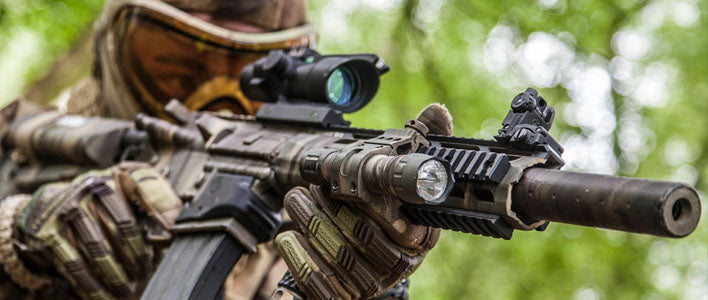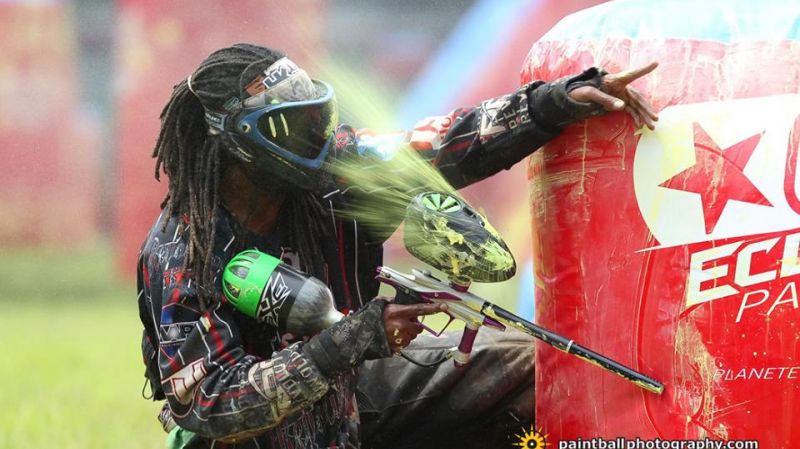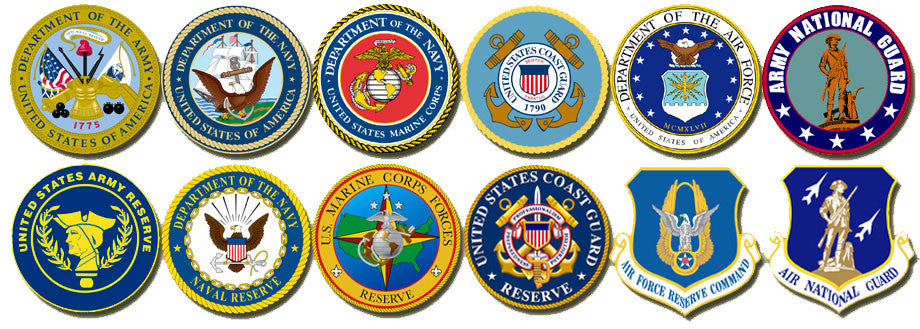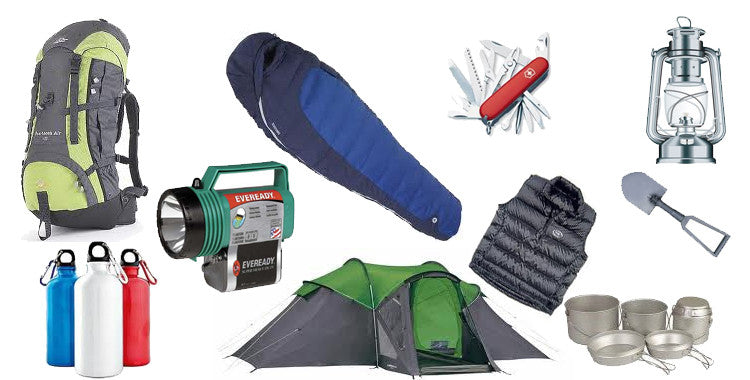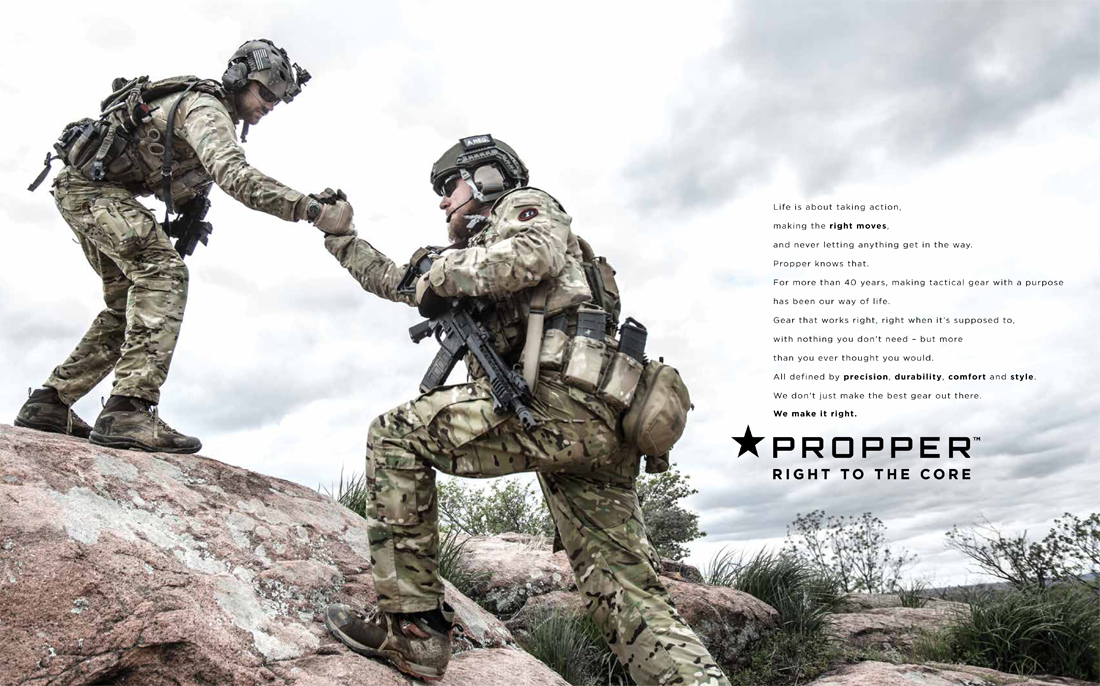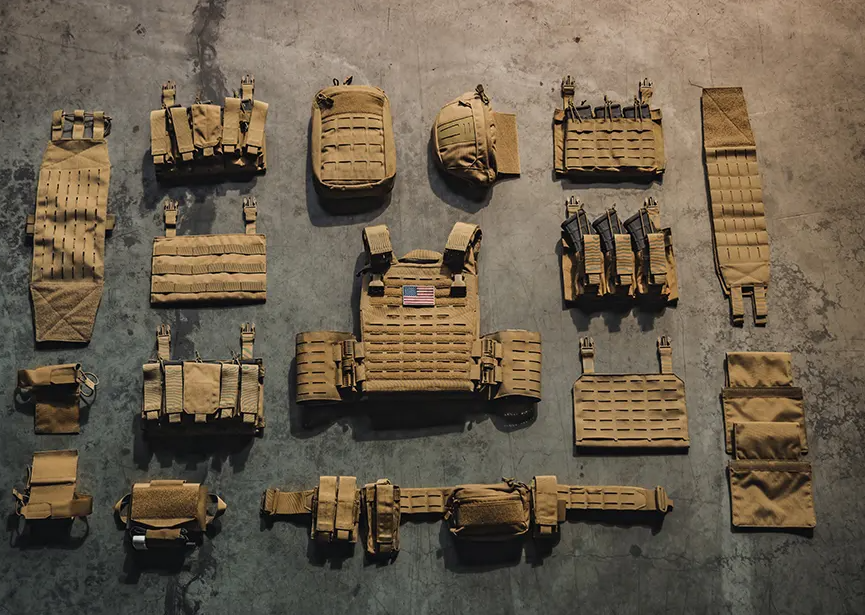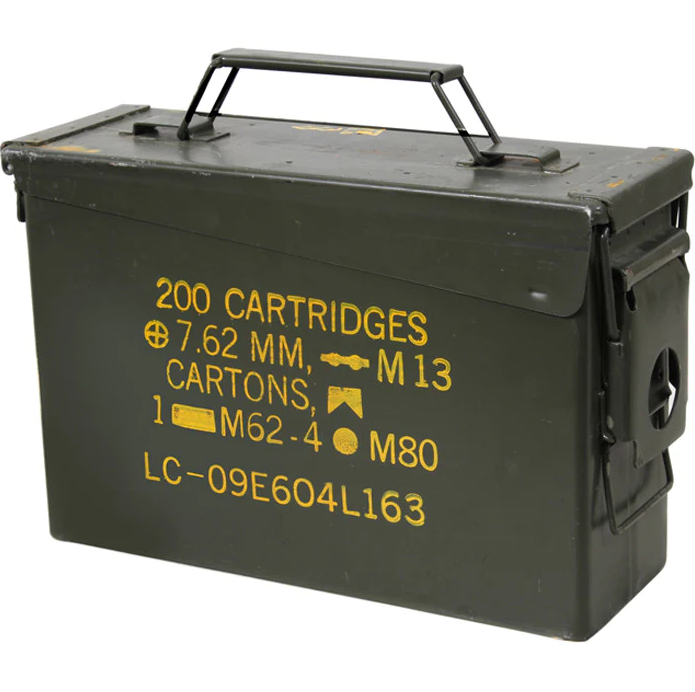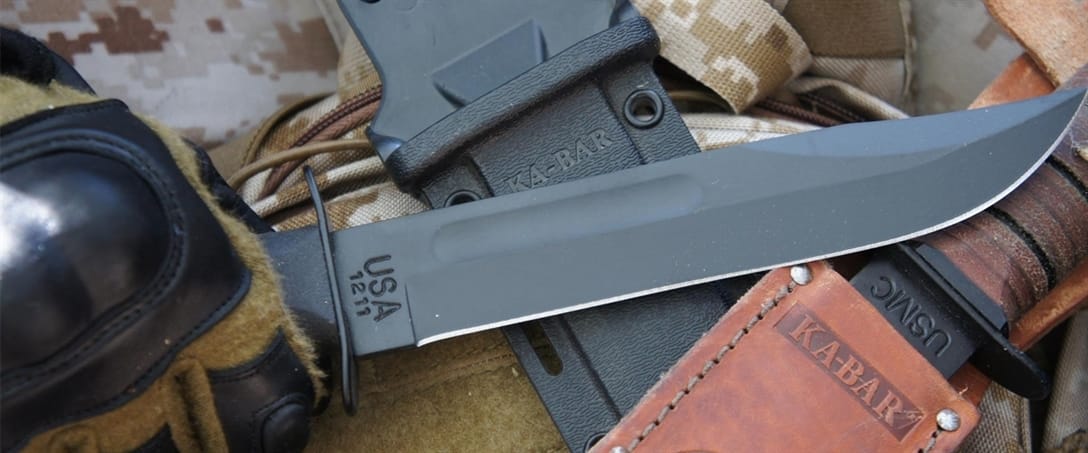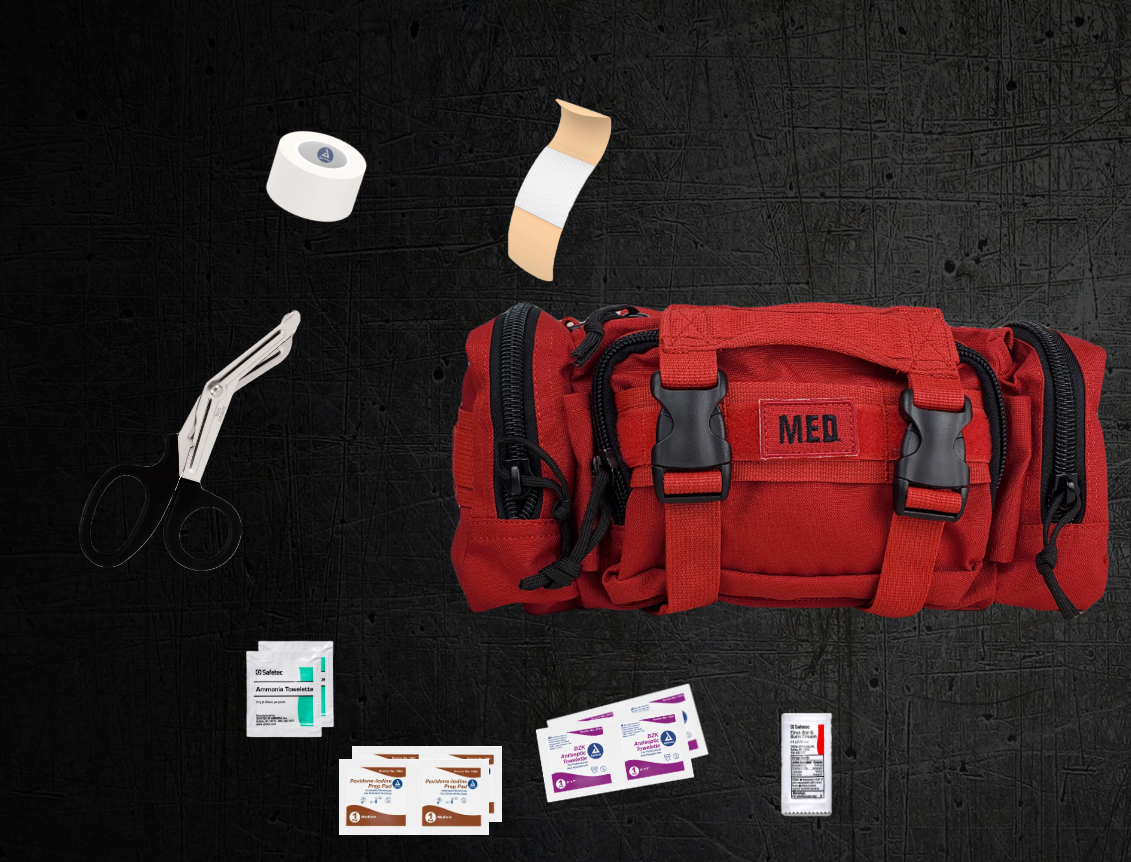A Brief History of Dog Tags

The set of Dog Tags has become a ubiquitous symbol associated with military service, the metal tags, hanging from chains around a soldier’s neck – or often hung as part of a make-shift memorial. These ID tags come to signify something very personal for the soldier, and unfortunately all too often for the family a soldier may leave behind.
The idea of being able to be identified after falling in battle has it’s modern beginnings with the American Civil War where soldiers used a variety of methods, from pinning notes with their names and addresses to the backs of their coats to etching that information in to the back of their issued belt buckles. Manufacturers of ID products capitalized on this and soon developed various products that could be purchased and used by soldiers.
The Prussian Army seems to be the first to use military issued tags, during the Franco-Prussian War in 1870, and this is where the nickname of Dog Tag also seems to come from. The Army issued tags were soon nicknamed Hundermarken (the German equivalent of “dog tags”) because of the comparison to a similar identification system used for dogs in Berlin at about the same time. As the use of such ID systems spread to other military’s, the nickname went with them.
The British Army were issuing tags of fibre from the start of WWI, a style used by their forces in Canada and New Zealand through WWII and the Korean War.
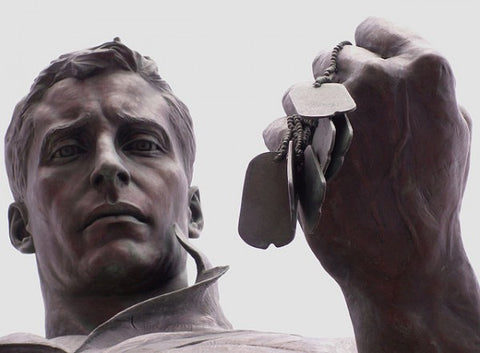
The U.S. Army first authorized issuing an ID Tag during WWI, around December of 1906.
“An aluminum identification tag, the size of a silver half dollar and of suitable thickness, stamped with the name, rank, company, regiment, or corps of the wearer, will be worn by each officer and enlisted man of the Army whenever the field kit is worn, the tag to be suspended from the neck, underneath the clothing, by a cord or thong passed through a small hole in the tab. It is prescribed as a part of the uniform and when not worn as directed herein will be habitually kept in the possession of the owner. The tag will be issued by the Quartermaster’s Department gratuitously to enlisted men and at cost price to officers…”
Originally, only one tag was issued, this changed about 10 years later to issue two tags: one to stay with the body and the other to go to the person in charge of the burial for record-keeping purposes. A couple years later, the Army started the serial number system, a unique ID number to be stamped on all tags. Serial number 1 was assigned to enlisted man Arthur B. Crane of Chicago in the course of his fifth enlistment period.
To this day, many countries issue a single tag that is designed to have a section broken off when the soldier has fallen versus using two identical tags.
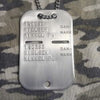 The WWII style tag, unique because of the notch found in one end of the tag has developed it’s own folklore. Rumor was, the notch was so if a soldier found one of his comrades on the battlefield, they would take one tag to the commanding officer and stick the other between the teeth of the fallen soldier to ensure the tag would remain with the body and be identified. Reality is not so… compelling. The notch was actually designed to hold the tag in place when being imprinted on the carbon-paper medical form used by the Medical Department during WWII.
The WWII style tag, unique because of the notch found in one end of the tag has developed it’s own folklore. Rumor was, the notch was so if a soldier found one of his comrades on the battlefield, they would take one tag to the commanding officer and stick the other between the teeth of the fallen soldier to ensure the tag would remain with the body and be identified. Reality is not so… compelling. The notch was actually designed to hold the tag in place when being imprinted on the carbon-paper medical form used by the Medical Department during WWII.
Another, sometimes point of contention, is if “official” tags are embossed (raised lettering) or debossed (stamped in lettering) and the truth seems to be as simple as “it depends on the machine used at the time the tags are issued.
The nostalgia of the Dog Tag has led to them becoming a bit of a fashion item, and even a marketing tool for a popular, military themed video game. While there are some standard layouts in use by the various military branches, personalized dog tags are often used by civilians for a variety of purposes, bothfashion and utilitarian related.
Below are examples of the various US Military dog tags.

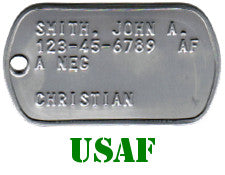

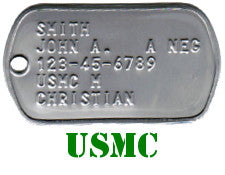
CC Military Surplus is able to make personalized dog tags for you in all of our stores, or you can order them online.
